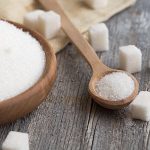
A fasting diet is a nutritional therapy involving either full or partial caloric restriction. There are many ways you can prepare yourself for a fast. In this article, I’ll give you the tips and tricks that’ll help you successfully reach your fasting goals such as healthy habits, nutrition, and hunger management.
Make things easy on yourself from the very beginning. First, make sure you do your research into fasting, especially if you’re aiming for a specific health benefit. Not all fasts have the same results, so choose your fast carefully to achieve your goals. Before embarking on your fast, speak with your trusted health care provider about your plans. They’ll be able to advise you if any medications or supplements you take will need to be adjusted for the fast.

The Fasting Diet - In-depth Interview with Dr. Goldhamer & Dr. Group, DC
Length: 93 minutes
Tips on How To Get Through a Fast
- Set clear boundaries before beginning
- Get a head start on any new projects before starting your fast
- Begin fasting on Friday afternoon
- Prepare yourself emotionally for hunger and irritability
- Don’t over-commit to social engagements for the duration of the fast
- Drink plenty of water or tea
- Complete any chores the night before to make mornings easier
- Take naps during your lunch breaks
- Go easy on your workouts
- Try indulging in a hobby you don’t normally have time for to keep busy
- Go to bed earlier
Establish Clear, Measurable Goals
With any new routine or healthy habit, it’s important to set measurable goals, instead of vague, undefined objectives. Assign a number to the goal. Pick a percentage, duration length, or reading on a ketone strip. You’ll get a big boost in your sense of accomplishment once you make it. If not, you’ll be able to evaluate how close you got to it, giving a new milestone for next time. When fasting, your goal might be to go a set amount of time without breaking the fast. It might be losing body fat or experiencing the clear thinking associated with fasting. Fasting can also be helpful to kick start new dietary habits, such as eliminating particular foods, or removing them temporarily so that you can identify which foods are causing digestive concerns, headaches, or other health concerns. Set your goals ahead of time.
Know Yourself
Despite the many benefits, fasting is still challenging. If you’re irritable when you’re hungry, expect to be the same on your fast — only slightly worse. For the first 2 to 3 days, you’ll likely experience some negative sensations and your mood may suffer as a result. Initially, intense hunger is normal, but this feeling quickly fades. Your body and its hormones quickly adjust to lower calorie input. You may find the mild discomfort of hunger pales in comparison to the effect on your mood. Some people report feeling shaky, weak, dizzy, or just generally out of sorts while their body adjusts. Prepare yourself mentally for these sensations. Interestingly, after a few days, many people report feeling a surge of energy, and even elation. Feelings may change throughout the fast.
Your feelings will affect how you respond to situations and interact with other people. Stay aware of your mental state throughout your fast and do what’s necessary to steer yourself toward a more positive experience for yourself and those around you. When you speak with others, try to acknowledge that any crankiness is due to fasting reactions, rather than the person or project you're currently working on. If you feel irritable, compose yourself by breathing deeply or try meditating to reflect on your emotional state.
Get a Jump on Work
The first few days will be the toughest, so prepare yourself so that your days run as smoothly as possible. To compensate, try to get ahead on any projects that require intense mental effort in the days leading up to your fast. The best practice is preparing as though you’ll be slightly dazed for the first 2 to 3 days. Stress and fasting are not a good pair, so try to make up for any heavy mental lifting early by getting ahead. That way you can relax, and you’ll be able to dial it back a little and take the pressure off for the first few days.
Detox Your Diet
Two weeks before your fast, eliminate the food you crave the most. If you have a particular weakness for soda or fries, cut these from your diet well before you begin fasting. Cravings for specific foods are normal, but while you’re fasting, you won’t be able to satisfy them. To dispel their power over you, try cutting these kinds of foods from your diet a week or two before fasting.
Tidy Up at Home
Losing your shoes, misplacing your keys, or not having something to wear are some of those daily frustrations that you can easily avoid with some timely preparation. When you’re fasting, these kinds of frustrations can feel a lot worse. Plan for them to make your mornings easier.
Before your fast, complete your chores. Pick up the dry cleaning, pay any bills due soon, wash and fold your laundry, make sure all the walkways in your home are clear of tripping hazards. As you fast, you might begin to feel floaty and euphoric, so try to be diligent about putting your belongings where they need to go.
Overcoming Obstacles While Fasting
Now that you know what to expect, here’s a little primer on overcoming the obstacles that arise while you’re fasting.
Drink Water to Manage Hunger
Cravings are one of the most significant obstacles when you’re just starting your fast. It may begin to feel like an uphill battle with little incentive to keep going. You may notice that your sense of smell is heightened when you’re fasting. Fortunately, most people only feel such intense cravings for the first 72 hours.
Hunger and thirst are often confused, and while this might not be the case on day two of your fast, filling up on water can help alleviate some feelings of hunger. Warm, fragrant herbal teas are another excellent option to quiet a grumbling stomach. If you’re not on a strict water fast, you can have clear broth or watered-down juice to keep your energy up.
Keep Your Fast to Yourself
Among the many potential challenges that stand in your way are the people around you. Scientific research on fasting is not well-known among the general populace, so you’ll likely meet with resistance if you tell anyone that you’re fasting for health purposes.
Friends and family might not approve, and they may try to talk you out of it — especially if they’re unfamiliar with the concept. Most people equate fasting with starving and immediately dismiss the merits of the practice. Of course, you can show your naysayers the many studies on the benefits of fasting, but you may not be able to change their mind. Your best bet is only telling the people who need to know. This list includes your partner, your health care provider, and maybe your immediate supervisor.
Start Your Fast Before a Weekend
Since the first 2 to 3 days are the toughest, try timing your fast to begin on a Friday after lunch — or whatever your free days are from work. This way the most difficult initial days will be at a time when you don’t have to deal with work, traffic, or the scent of donuts wafting from the break room.
Get Plenty of Rest
Expect to feel tired, initially. Your body is adjusting, and you’ll likely feel drained both emotionally and in terms of energy. Treat yourself to a good night’s rest. Take cat naps during the day if you can.
Go Easy at the Gym
Take it easy on your workouts. Fat metabolizes much more slowly than carbohydrates and protein, so your best bet to spare muscle while fasting is an easy walk or a restorative yoga class.[1, 2]
Coping With Boredom
Without all the meal prep, cleaning, and eating, you might have extra time on your hands. To avoid giving in to that initial hunger, fill that time with something you don’t normally have time to do. A task that keeps your hands busy is a better option than idly sitting and watching TV. Knitting, sewing, reading, woodworking, journaling, video games, or another hobby are effective ways to keep your hands from reaching into the pantry. Find something you look forward to doing to keep your mind off eating.
Take a Nap
Mealtimes might be difficult, so don’t hesitate to skip out and take a power nap. If you’re at work, try taking a short siesta in your car or a quiet room. You’ll wake up feeling refreshed and ready to take on the rest of the day.
Remind Yourself of Your Goals
If you find yourself trying to rationalize breaking your fast earlier than you planned, stop and reflect on why you wanted to fast to begin with. That said, make sure to listen to your body. If you begin to feel ill or very weak, don’t put off breaking your fast out of stubbornness or competition. Don’t try to do more than your body can handle. You can always try again.
Keep Your Energy Levels Up
Fasting can leave you feeling depleted in more ways than one. In addition to staying hydrated, you might also consider supplementing with B vitamins to recoup some of your energy. Our Vitamin B12 is formulated with methylcobalamin, the form of B12 your body needs to keep you energized. On strict water fasts, you will not want to take supplements, but if you are doing a juice fast, you can take them. Either way, replenishing nutrients is critical after you end your fast.
Breaking Your Fast
Breaking your fast properly is critical. The first foods you feed your body after fasting determine how successful you are at maintaining the progress you’ve made. Don’t undermine all the progress by breaking your fast with unhealthy starchy, greasy, or fried foods.
When you’re coming out of your fast, stay away from sugary foods. The ideal first meal would be something like juice or vegetable broth. After a day or more on juices or broths, try introducing fruit like watermelon, or a small, mixed green salad with healthy fats a drizzle of full-fat salad dressing. This will help you refamiliarize your body with solid foods without overwhelming it.
Ideally, the foods you eat in the transition period between fasting and eating normally should be the kinds of things you would eat on a cleanse. This includes raw, fibrous vegetables, watery soups, nuts, seeds, and ancient grains mixed with raw or steamed vegetables. Start incorporating fruit back into your diet 1 to 2 days after breaking the fast. Fruits contain a lot of sugar, so try sticking with low-glycemic fruits like cherries, coconut meat, watermelon, avocados, and blueberries.[3, 4, 5, 6]
Lasting Changes After Fasting
Think of breaking your fast as the chance to upgrade your lifestyle. Fasting is not only one of the best ways to activate your body’s self-healing process, but it also re-sensitizes your palate to subtle flavors. You’ll find that foods that were once bland or uninteresting are now bursting with flavor.
This is your opportunity to structure your diet around nutrient-dense foods bursting with vitamins, minerals, and antioxidants that are essential to your health. Eat meals built around foods you aspire to desire — try celeriac, kale juice, and smoothie bowls — all of those beautiful, healthy things you would eat if you only had the time and inclination. Before long, you will crave them!
If you want to learn more, read our guide to the different types of fasting to figure out which fast is right for you.
References (6)
- Berg, J.M., Tymoczko, J.L., Stryer, L. "Biochemistry. 5th edition. New York: W H Freeman; 2002. Section 30.4, Fuel Choice During Exercise Is Determined by Intensity and Duration of Activity." Web.
- "Muscle Physiology - Metabolism Of Fatty Acids." Muscle.ucsd.edu. N.p., 2017. Web. 16 May 2017.
- "Cherries, Sweet, Raw Nutrition Facts & Calories." Nutritiondata.self.com. N.p., 2017. Web. 16 May 2017.
- "Nuts, Coconut Meat, Raw Nutrition Facts & Calories." Nutritiondata.self.com. N.p., 2017. Web. 16 May 2017.
- "Watermelon, Raw Nutrition Facts & Calories." Nutritiondata.self.com. N.p., 2017. Web. 16 May 2017.
- "Blueberries, Raw Nutrition Facts & Calories." Nutritiondata.self.com. N.p., 2017. Web. 16 May 2017.
†Results may vary. Information and statements made are for education purposes and are not intended to replace the advice of your doctor. If you have a severe medical condition or health concern, see your physician.








